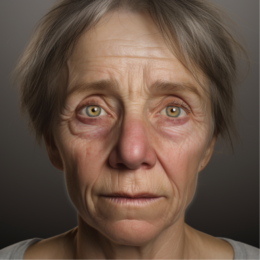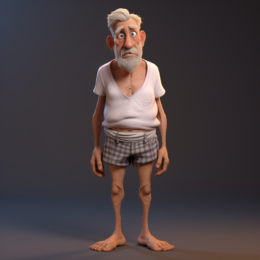How to Diagnose Arthritis: A Comprehensive Guide

We thought you might like these too…
What Is Osteoarthritis? (Symptoms, Causes, and Treatments)
9 Early Warning Signs of Psoriatic Arthritis
What Are the 4 Stages of Rheumatoid Arthritis?
How to Prevent Arthritis? (Diet, Exercise & More)
Arthritis, a term often thrown around in casual conversations, is not as simple as it sounds. It’s a complex condition that affects joints but varies in symptoms, causes, and treatments. Let’s delve deeper into understanding how to diagnose arthritis and why early detection is crucial.
Types of Arthritis:
- Rheumatoid Arthritis (RA): An autoimmune disorder where the immune system mistakenly attacks the body’s tissues.
- Osteoarthritis (OA): The most common form is the wear and tear of joint cartilage.
- Gout: Caused by uric acid crystal deposits in the joints.
- Systemic Lupus Erythematosus (SLE): Another autoimmune disease affecting many body parts.
- Ankylosing Spondylitis: A type of arthritis affecting the spine.
- Juvenile Arthritis: Arthritis that affects children.
Common Symptoms of Arthritis:
While symptoms can vary, some commonalities include:
- Persistent joint pain.
- Joint swelling or stiffness, especially in the morning.
- Redness or warmth around the joint.
- Limited range of motion.
The Diagnostic Process
The journey to diagnosing arthritis is multifaceted, involving a combination of clinical evaluations, tests, and sometimes, a bit of detective work.

Medical History Assessment:
Before any tests are conducted, doctors will delve deep into the patient’s medical history. This includes understanding any family history of arthritis, the onset and duration of symptoms, and any other relevant health conditions. This step is crucial as it provides context and can sometimes point directly to specific types of arthritis.
Physical Examination:
This isn’t just a cursory look. Doctors will meticulously check for joint tenderness, swelling, warmth, and redness. They’ll also evaluate the range of motion in the affected joints. The pattern of joints affected can also give clues; for instance, RA often affects joints symmetrically.
Laboratory Tests:
Blood tests can detect markers of inflammation, such as the erythrocyte sedimentation rate (ESR) and C-reactive protein (CRP). They can also detect antibodies like the rheumatoid factor, which is associated with RA. Joint fluid tests can be done to check for urate crystals indicative of gout or bacteria, suggesting infectious arthritis.
Differential Diagnosis:
This is a process of elimination. By ruling out other conditions that might be causing the symptoms, doctors can narrow down the type of arthritis or confirm its presence.
Specialist Consultation:
In cases where the diagnosis is complex or uncertain, a rheumatologist might be consulted. These specialists have in-depth knowledge of autoimmune diseases and can provide a more detailed evaluation.
Criteria for Specific Arthritis Types
Rheumatoid Arthritis Diagnosis Criteria:
RA is characterized by joint inflammation. Blood tests are crucial, looking for antibodies like the rheumatoid factor and anti-cyclic citrullinated peptide (anti-CCP). Imaging tests, like X-rays, can show joint damage typical of RA.
Osteoarthritis Diagnosis Criteria:
OA is diagnosed primarily through physical examination and patient symptoms. X-rays can show cartilage loss, bone damage, and bone spurs. MRI might also be used to get a detailed view of the joints.
Gout Diagnosis Criteria:
The presence of urate crystals in the joint fluid is a definitive sign of gout. Blood tests measuring uric acid levels can support the diagnosis, though not always conclusive.
Systemic Lupus Erythematosus Diagnosis Criteria:
SLE is diagnosed through a combination of physical symptoms and blood tests. The presence of antibodies like antinuclear antibodies (ANA) can suggest SLE.
Quick Poll
Challenges in Diagnosing Arthritis
Overlapping Symptoms:
The symptoms of different arthritis types can be very similar, making it challenging to pinpoint the exact condition. For instance, both gout and infectious arthritis can cause acute joint pain.
Delayed Diagnosis:
Many people, especially younger individuals, might dismiss their symptoms, attributing them to minor injuries or overexertion. This can lead to a delay in diagnosis and treatment, worsening the condition.
Misdiagnosis:
Due to the overlapping symptoms and the vast number of conditions that can cause joint pain, patients might initially be diagnosed with a different condition.
Cultural and Socioeconomic Factors:
In certain cultures, pain might be seen as a sign of weakness, leading individuals to avoid seeking medical attention. Socioeconomic factors can also play a role, with individuals from lower-income backgrounds potentially lacking access to healthcare.
Emerging Diagnostic Technologies
Biomarker Research:
Scientists are constantly searching for new biomarkers – substances in the blood or tissues that can indicate the presence or severity of arthritis. These can aid in early detection and monitoring of the disease.
Advanced Imaging Techniques:
Beyond X-rays and MRIs, newer imaging techniques can provide even clearer pictures of affected joints, helping in accurate diagnosis and monitoring progression.
Artificial Intelligence in Diagnosis:
With the advent of AI, vast amounts of patient data can be analyzed quickly. AI tools can assist doctors by suggesting potential diagnoses based on this data, ensuring no detail is overlooked.
Importance of Early Detection:
Emerging technologies underscore the importance of early detection. The sooner arthritis is diagnosed, the sooner treatment can begin, preventing joint damage and improving the patient’s quality of life.
Treatment and Management:
Treatment varies based on the type of arthritis but often includes medications, physical therapy, and lifestyle changes. Physical activities for seniors, for instance, can help manage symptoms of OA.
Prevention and Risk Reduction
While not all types of arthritis are preventable, leading an active lifestyle, maintaining a healthy weight, and avoiding joint injuries can reduce the risk. Wondering how to prevent arthritis? Regular exercise and a balanced diet are key!
Tom’s Battle with Osteoarthritis
Meet Tom, a 50-year-old accountant. He loved morning jogs but started noticing persistent knee pain. Initially dismissing it as age-related, a visit to the doctor revealed he had OA. Early intervention helped Tom manage his condition, and he’s back to enjoying his jogs.
Conclusion
Medical advice is crucial for anyone experiencing joint pain or related symptoms. Early intervention can make a world of difference in managing the condition and maintaining a high quality of life. And as we continue to advance in our understanding and capabilities, there’s hope on the horizon for the millions affected by arthritis worldwide.
DO YOU KNOW SOMEONE WHO IGNORED THEIR JOINT PAIN AND LATER GOT DIAGNOSED WITH ARTHRITIS? SHARE THEIR STORY!
References
- CDC – Arthritis Statistics
- Rheumatology.org – Rheumatoid Arthritis
- Mayo Clinic – Osteoarthritis
- Arthritis.org – Juvenile Arthritis
- NIAMS – Ankylosing Spondylitis
- Gout Education
- Lupus.org – What is Lupus
- Delays in help seeking at the onset of the symptoms of rheumatoid arthritis: a systematic synthesis of qualitative literature





